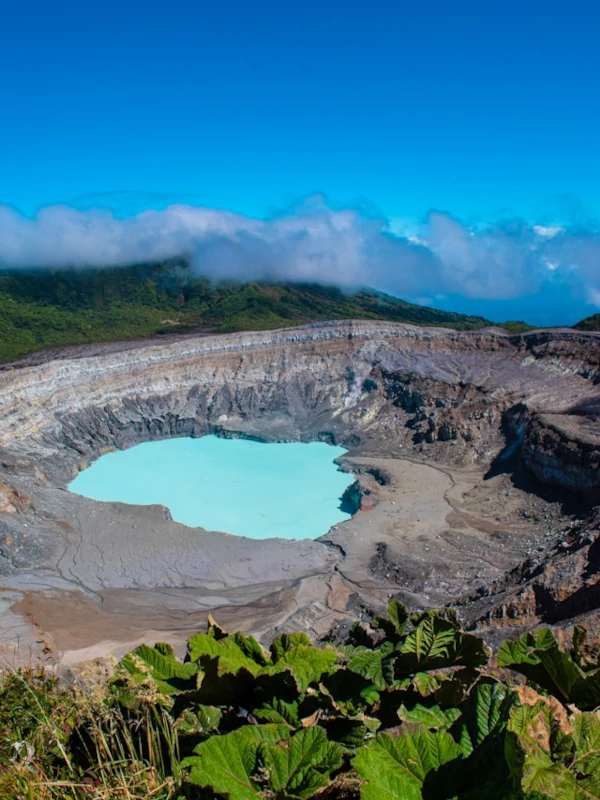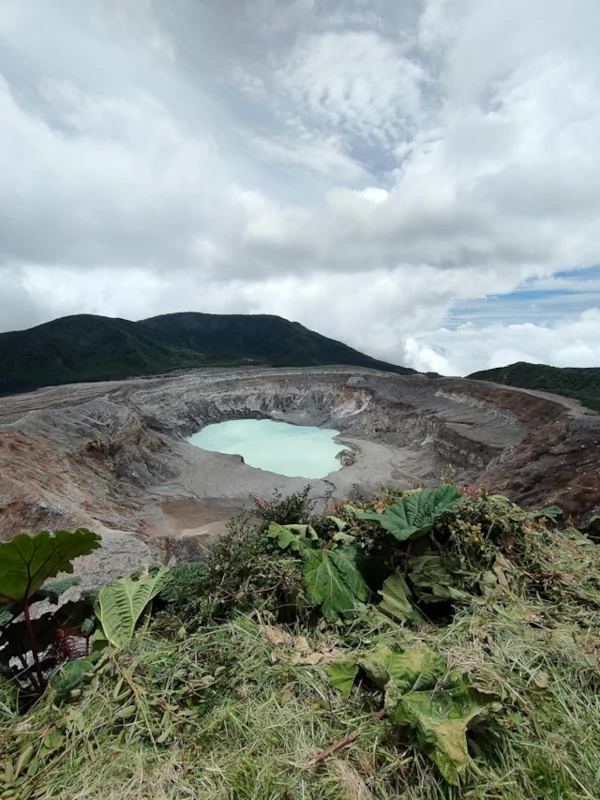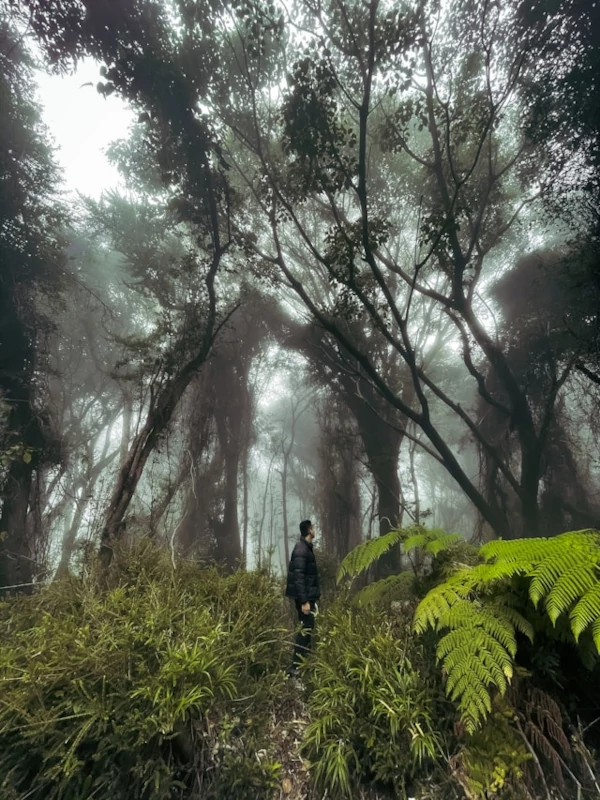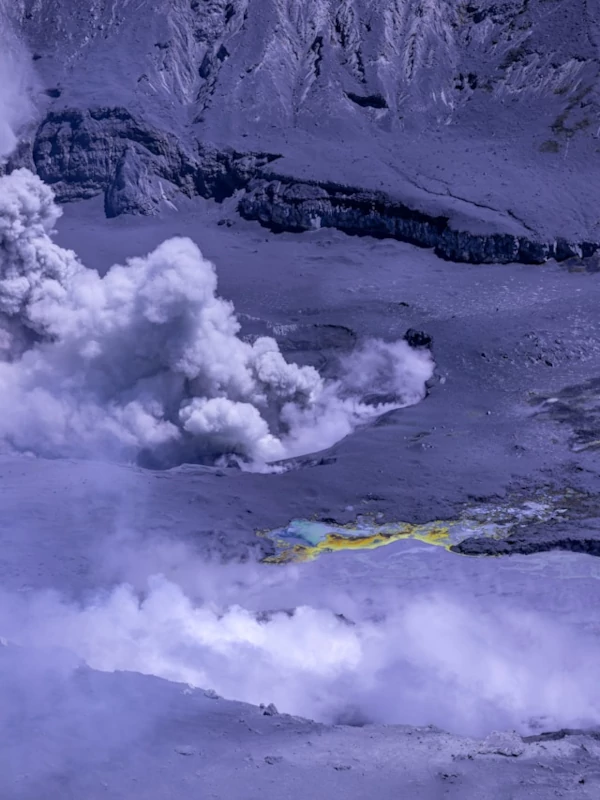The park’s centerpiece, the Poás Volcano, features a massive crater with a steaming turquoise lake, offering a breathtaking spectacle of geothermal activity. Visitors can explore crater viewpoints, hike through lush cloud forest trails, and discover unique wildlife and flora. With its mix of dramatic volcanic landscapes and serene natural beauty, Volcán Poás National Park is a must-visit destination for nature enthusiasts and adventure seekers alike.
Poás Volcano National Park: Active Volcano, Hiking, and Cloud Forest Wonders
Why Visit Poás Volcano National Park?
A Majestic Active Volcano
Poás Volcano National Park is home to one of Costa Rica’s most iconic natural landmarks, the Poás Volcano. Known for its dramatic landscapes, the volcano features one of the world’s largest craters, complete with a stunning turquoise acid lake that emits clouds of steam. This breathtaking sight showcases the power of geothermal activity and offers visitors a front-row seat to one of nature’s most incredible spectacles.
Easy Access and Stunning Views
Located just 1.5 hours from San José, Poás Volcano National Park is one of the most accessible national parks in Costa Rica. Whether you’re on a short trip or a packed itinerary, the park’s convenient location makes it an ideal day trip. Visitors of all ages can enjoy its well-maintained trails and easily reachable viewpoints, ensuring everyone can experience the beauty of this natural treasure.
A Unique Blend of Geology and Ecology
What makes Poás Volcano truly special is its combination of volcanic landscapes and lush cloud forests. Surrounding the crater, you’ll find trails winding through moss-covered trees, bromeliads, and orchids, offering a stark contrast to the stark, lunar-like crater. This mix of terrains makes the park a haven for photographers, hikers, and nature enthusiasts alike.
A Family-Friendly Adventure
Poás Volcano National Park is an excellent choice for families. Its relatively short trails and informative visitor center make it a fun and educational experience for kids and adults alike. Don’t forget to stop by the Poás Volcano Museum, where you can learn about the park’s geology, history, and conservation efforts.
Visiting Poás Volcano National Park is more than just a trip to see a volcano—it’s an opportunity to connect with the incredible landscapes and ecosystems that make Costa Rica so unique.
Unique Features of Poás Volcano National Park
The Main Crater: A Spectacular Natural Wonder
The Poás Volcano Crater is the crown jewel of the park and one of the largest active craters in the world, measuring nearly 1.5 kilometers in diameter. Its striking turquoise acid lake, surrounded by steaming vents, offers a surreal and unforgettable sight. On clear days, the panoramic views of the crater and surrounding landscapes are breathtaking. Witnessing the powerful geothermal activity is a rare experience that will leave visitors in awe of nature’s raw energy.
Laguna Botos: A Hidden Gem in the Clouds
Just a short hike from the main crater lies Laguna Botos, an extinct volcanic crater now filled with a serene freshwater lake. Surrounded by lush cloud forest, this tranquil spot is a stark contrast to the active main crater. The trail to Laguna Botos offers visitors a chance to immerse themselves in the park’s biodiversity and natural beauty, with towering trees, orchids, and moss-covered terrain.
Volcanic Landscapes and Lush Ecosystems
Poás Volcano National Park is a unique blend of dramatic volcanic terrain and thriving ecosystems. The park’s high-altitude location creates a cloud forest environment, where you’ll find a mix of volcanic rock formations and vibrant plant life. The contrast between the barren volcanic areas and the lush greenery of the forest makes the park a photographer’s dream.
The Wildlife and Biodiversity of Poás Volcano
Despite its volcanic activity, Poás Volcano National Park is a haven for wildlife and plant species. The surrounding cloud forest is home to birds like the resplendent quetzal, tanagers, and the fiery-throated hummingbird, as well as small mammals like coatis and squirrels. The park’s unique ecosystem supports a variety of orchids, bromeliads, and ferns, adding to its vibrant biodiversity.
By preserving its volcanic and forested areas, Poás Volcano National Park offers a glimpse into Costa Rica’s incredible geological and ecological diversity.
Activities in Volcán Poás National Park
Crater Viewpoints and Short Hikes
One of the top activities in Poás Volcano National Park is visiting the crater viewpoints, where you can gaze at the immense main crater and its steaming turquoise lake. The viewpoints are easily accessible via short, well-paved trails, making them suitable for visitors of all ages. These trails provide stunning photo opportunities and an up-close experience of the volcano’s awe-inspiring geothermal activity.
For those looking to explore further, the trail to Laguna Botos offers a peaceful walk through the cloud forest, leading to an extinct volcanic crater now filled with a picturesque lake. This hike is perfect for those who want to experience the park’s natural beauty and enjoy a serene environment.
Birdwatching in the Cloud Forest
Poás Volcano National Park is a birdwatcher’s paradise, thanks to its cloud forest ecosystem. Keep an eye out for the resplendent quetzal, known for its vibrant plumage, or the fiery-throated hummingbird, which is a dazzling sight flitting among the trees. With over 80 species of birds, including tanagers and flycatchers, the park offers plenty of opportunities for bird enthusiasts to spot rare and colorful species.
Visiting the Poás Volcano Museum
Enhance your visit by stopping at the Poás Volcano Museum, located near the park entrance. The museum provides fascinating insights into the geology, history, and ecology of the volcano and the surrounding area. Interactive exhibits explain the science behind volcanic eruptions, making it an educational stop for adults and children alike.
Photography Opportunities
With its combination of dramatic volcanic landscapes, lush cloud forests, and stunning vistas, Poás Volcano National Park is a dream destination for photographers. The crater viewpoints, Laguna Botos, and the trails through moss-covered trees offer countless opportunities to capture the natural beauty of Costa Rica. Don’t forget your camera or smartphone to take home breathtaking memories!
Relax and Enjoy the Scenery
For visitors who prefer a more laid-back experience, the park provides ample opportunities to simply relax and enjoy the stunning natural surroundings. Benches along the trails and near the crater viewpoints let you take in the scenery at your own pace, while the crisp mountain air adds to the peaceful ambiance.
Poás Volcano National Park offers a range of activities that cater to nature lovers, families, and adventure seekers, ensuring there’s something for everyone. Whether you’re hiking to Laguna Botos, spotting birds in the forest, or marveling at the volcanic crater, every moment in the park is unforgettable.
Visitor tips
Best Time to Visit
The best time to visit Poás Volcano National Park is during the dry season, which runs from December to April. Clearer skies during these months provide the best chance of unobstructed views of the crater and surrounding landscapes. Mornings are generally the best time of day to visit, as cloud cover tends to increase in the afternoon, obscuring visibility.
If you’re traveling during the rainy season (May to November), be prepared for sudden showers, but don’t let that discourage you—Laguna Botos and the lush forest come alive during this time, creating a magical atmosphere.
How to Get There
Poás Volcano National Park is located just 1.5 hours from San José, making it an easy day trip.
- By Car: Take the scenic drive through Alajuela Province, following well-maintained roads to the park entrance. Parking is available.
- By Public Transport: Buses from San José to Alajuela connect to the park. Ask locals for updated schedules, as routes may vary.
- By Tour: Many guided tours include transportation, offering a convenient and informative way to explore the park.
What to Pack
Packing the right items will ensure a comfortable and enjoyable visit:
- Lightweight jacket or sweater: The park’s high altitude makes it cooler than other areas of Costa Rica.
- Rain gear: Even in the dry season, weather can be unpredictable.
- Comfortable walking shoes: Trails are easy but require sturdy footwear for uneven surfaces.
- Sunscreen and hat: Despite the cooler climate, UV rays can be strong at this altitude.
- Reusable water bottle: Stay hydrated while reducing waste.
- Camera or binoculars: Capture the stunning views and spot wildlife along the trails.
Reservations and Entrance Fees
Due to its popularity, advance reservations are required to visit Poás Volcano National Park. Book your tickets online through the SINAC website to secure your entry. The entrance fee is $15 for international visitors and ₡1,000 for Costa Rican residents. Entry is time-specific to manage crowd levels, so plan accordingly.
Safety Tips
Poás Volcano is an active volcano, so it’s important to follow all safety guidelines:
- Stay within designated areas and do not approach the crater’s edge.
- Follow instructions from park rangers, especially if there is increased volcanic activity.
- Pay attention to posted signs about air quality—masks may be recommended on days with higher sulfur levels.
Respect the Environment
As a protected area, Poás Volcano National Park relies on visitors to help preserve its unique ecosystem. Follow the principles of Leave No Trace by:
- Staying on marked trails to protect the fragile flora.
- Avoiding littering and using designated bins for waste.
- Not disturbing wildlife, ensuring the park remains a safe haven for its inhabitants.
Nearby Attractions
Enhance your trip by exploring nearby destinations such as:
- La Paz Waterfall Gardens: A short drive from the park, this spot offers stunning waterfalls and lush trails.
- Coffee Plantations: Learn about Costa Rica’s rich coffee culture with a visit to a nearby plantation like Doka Estate.









